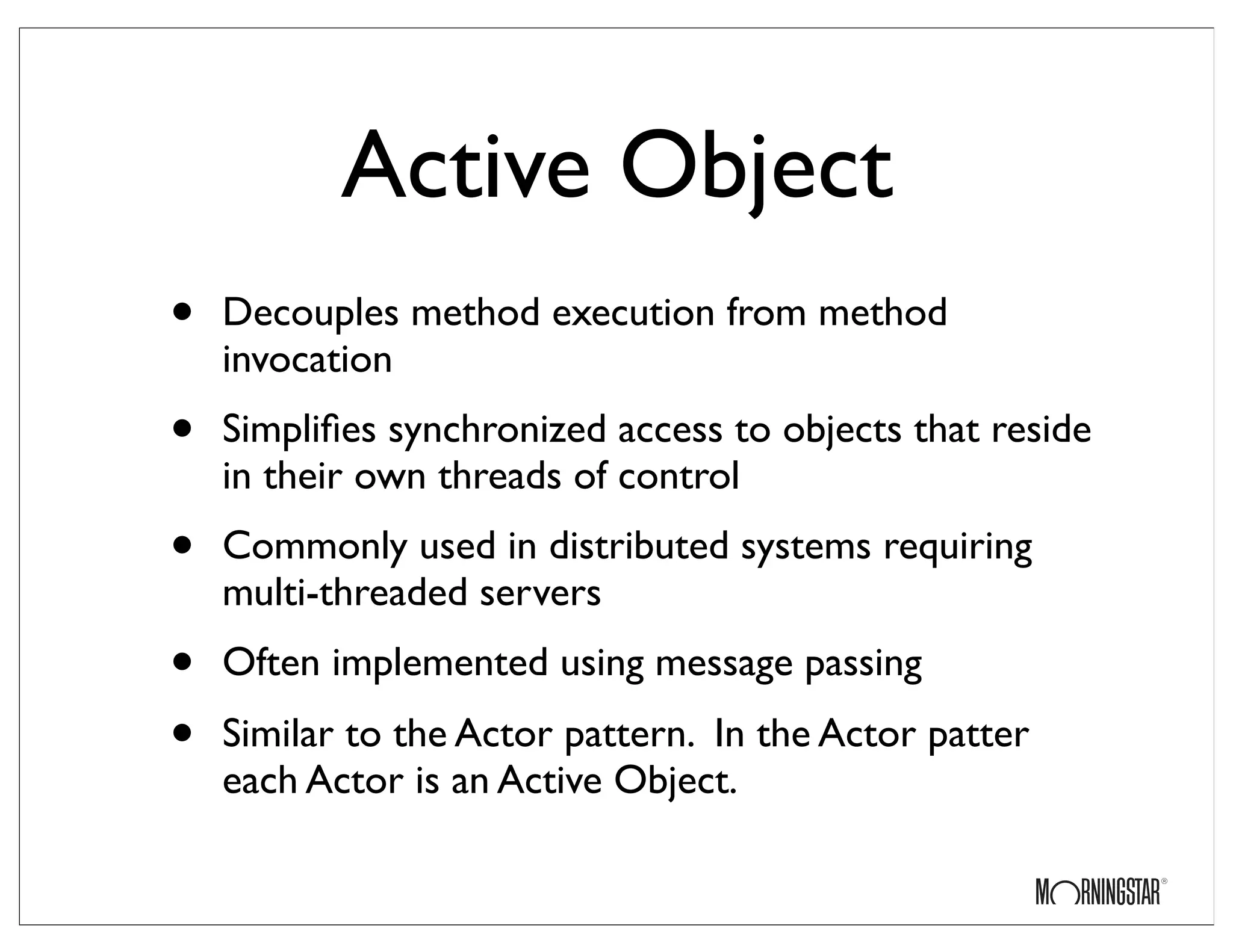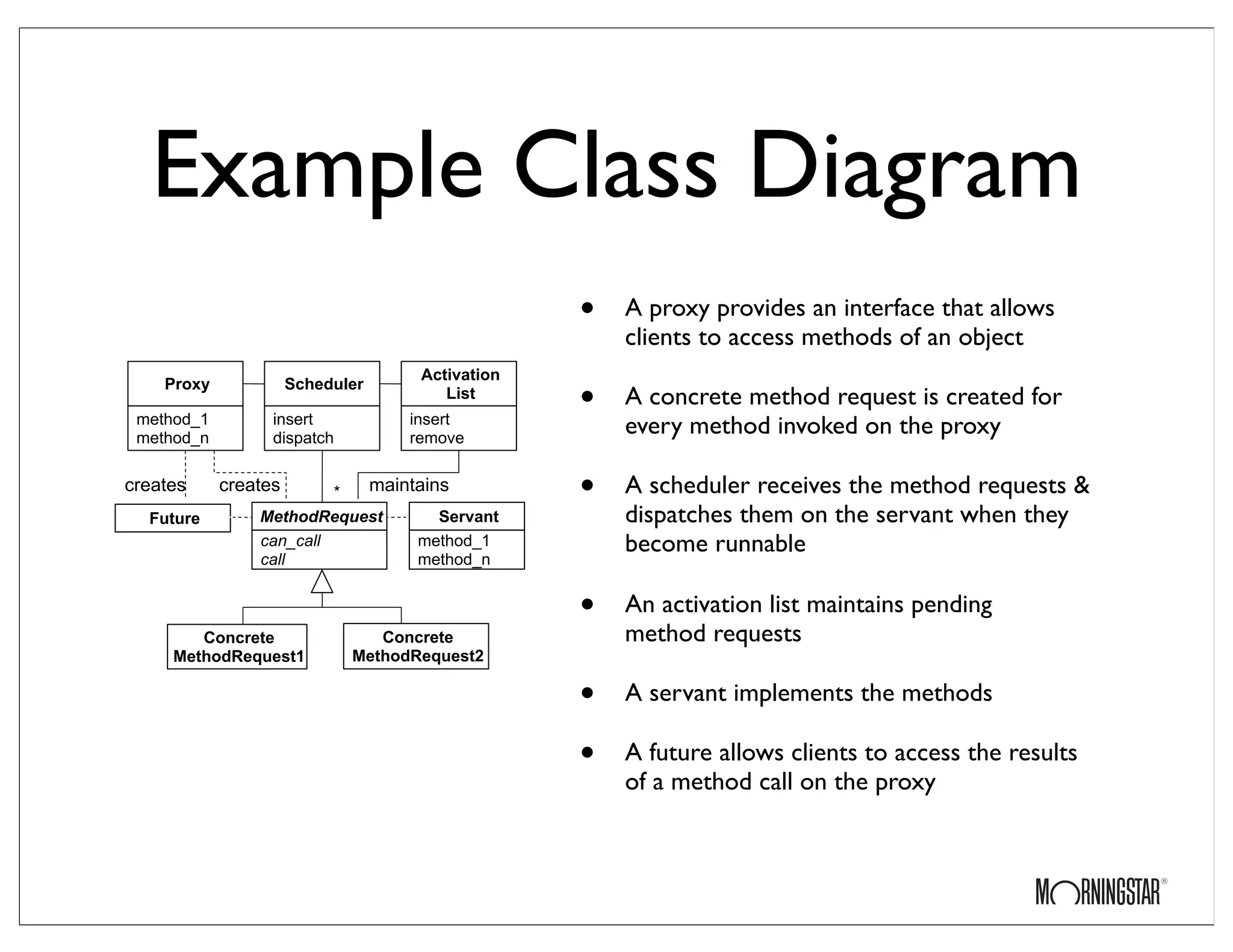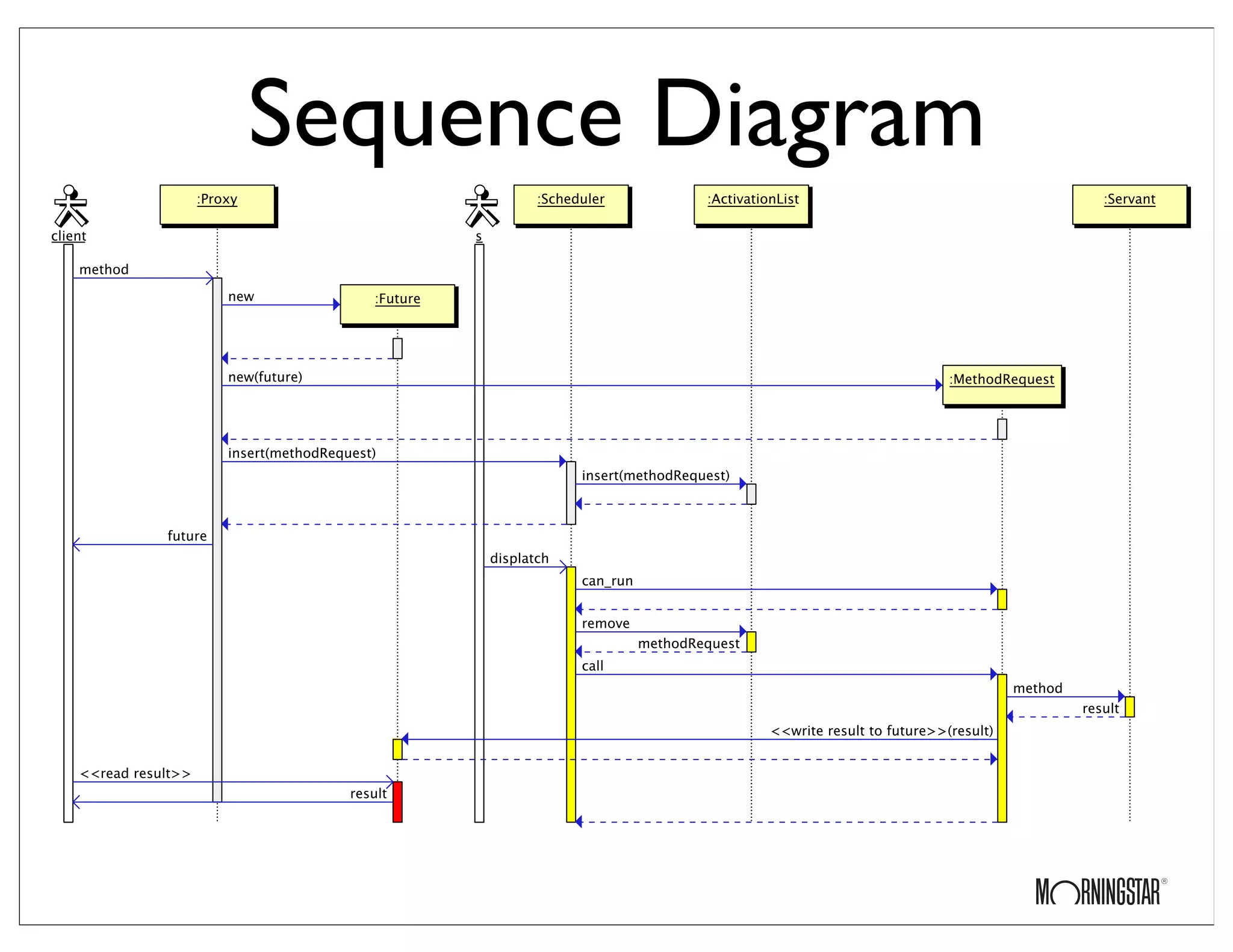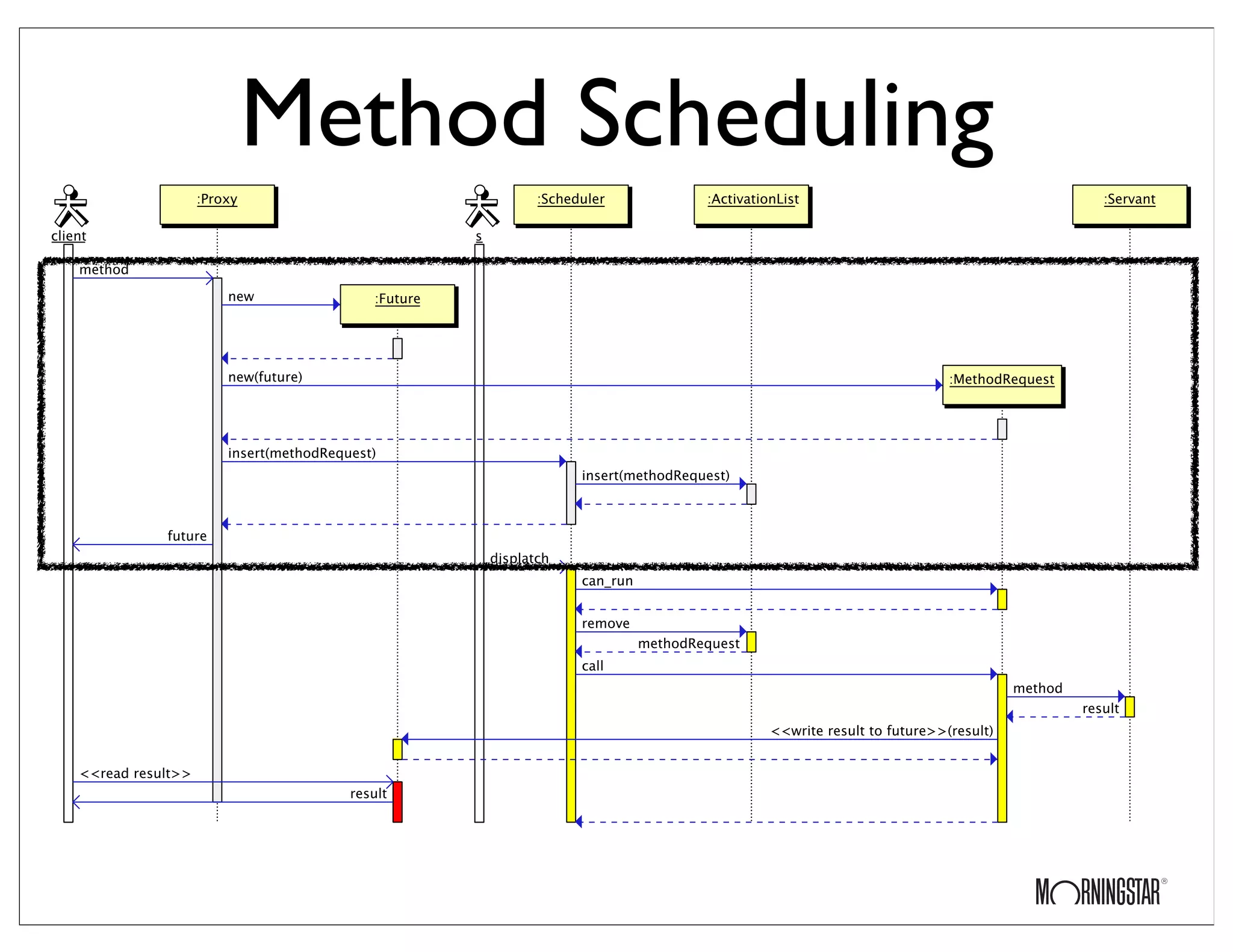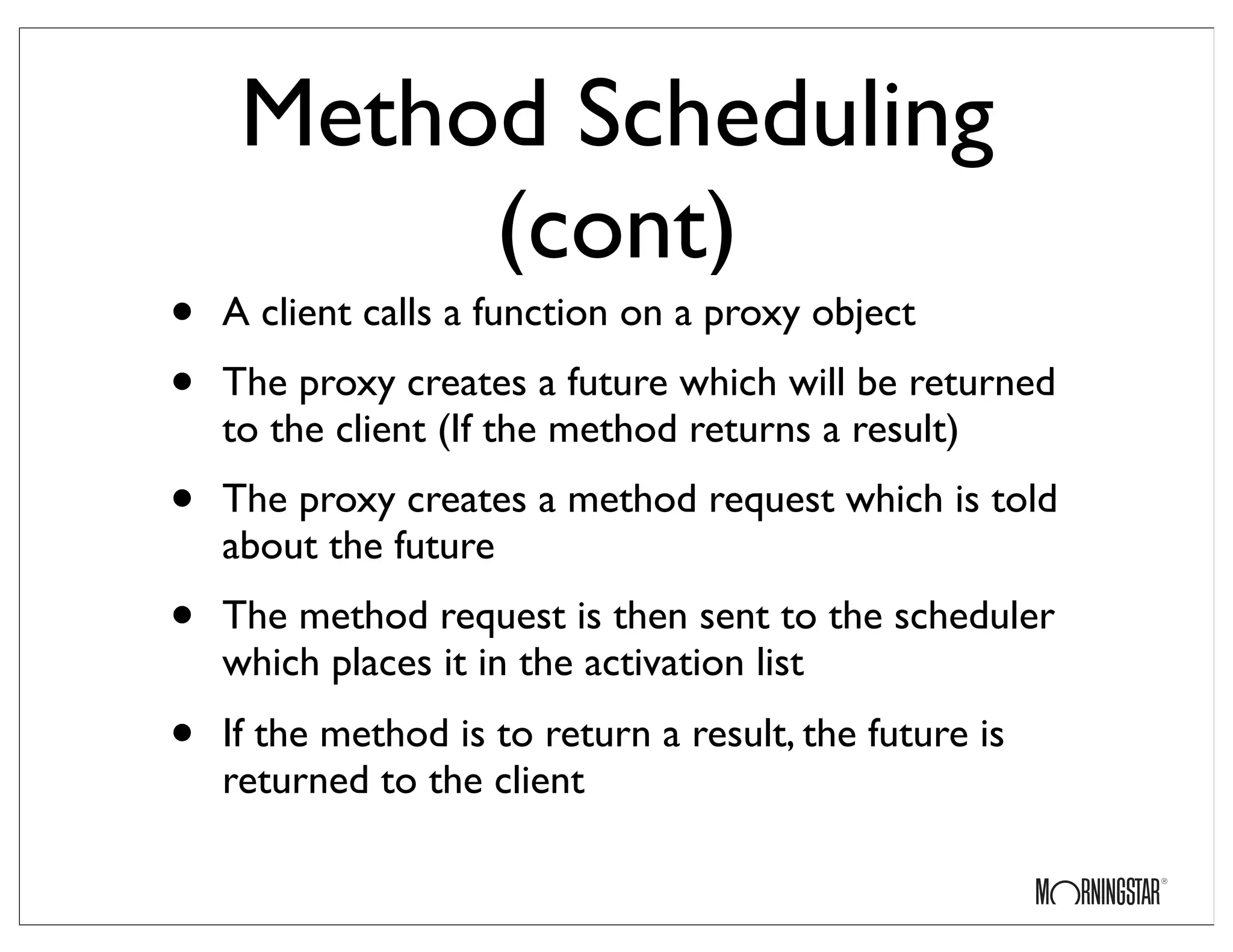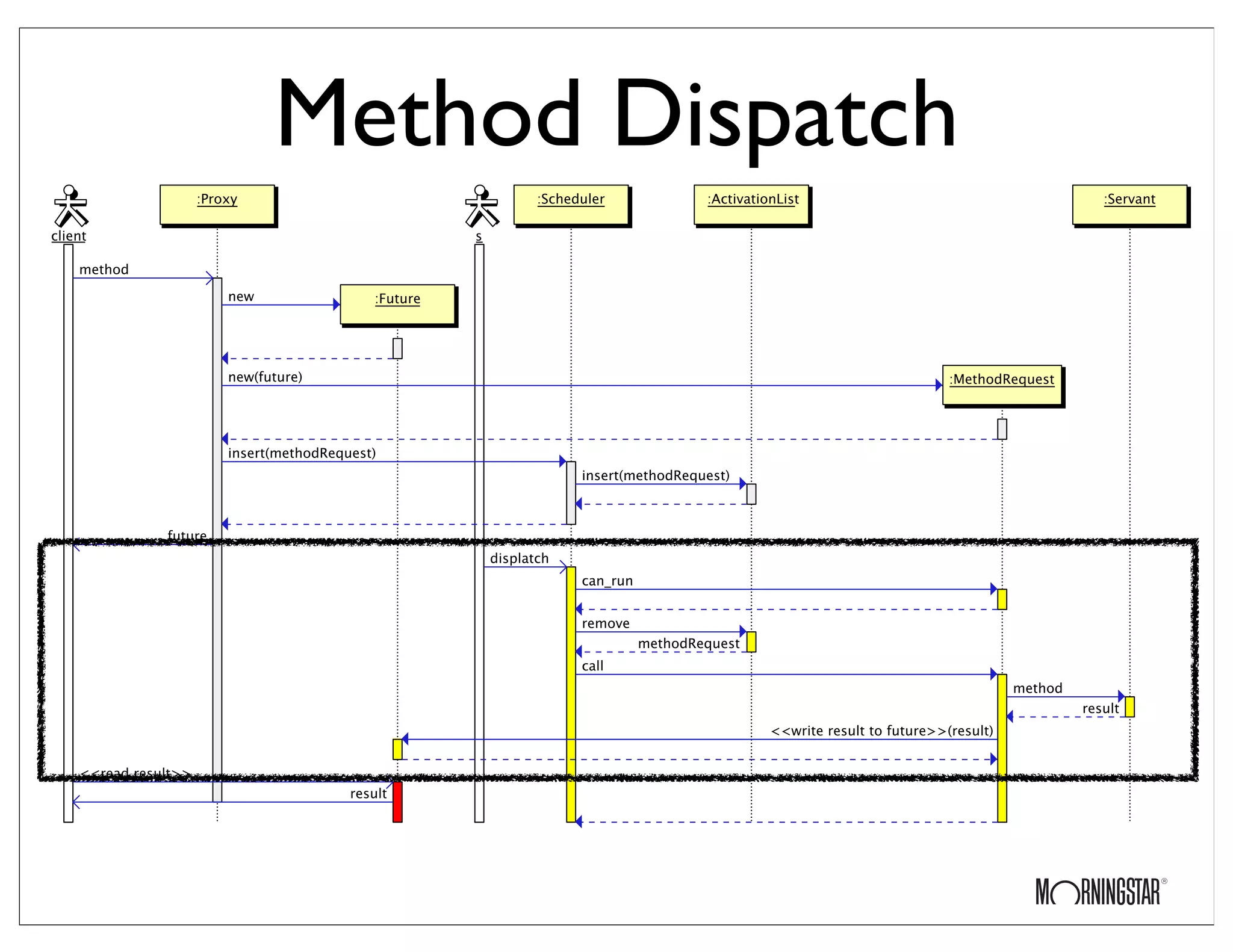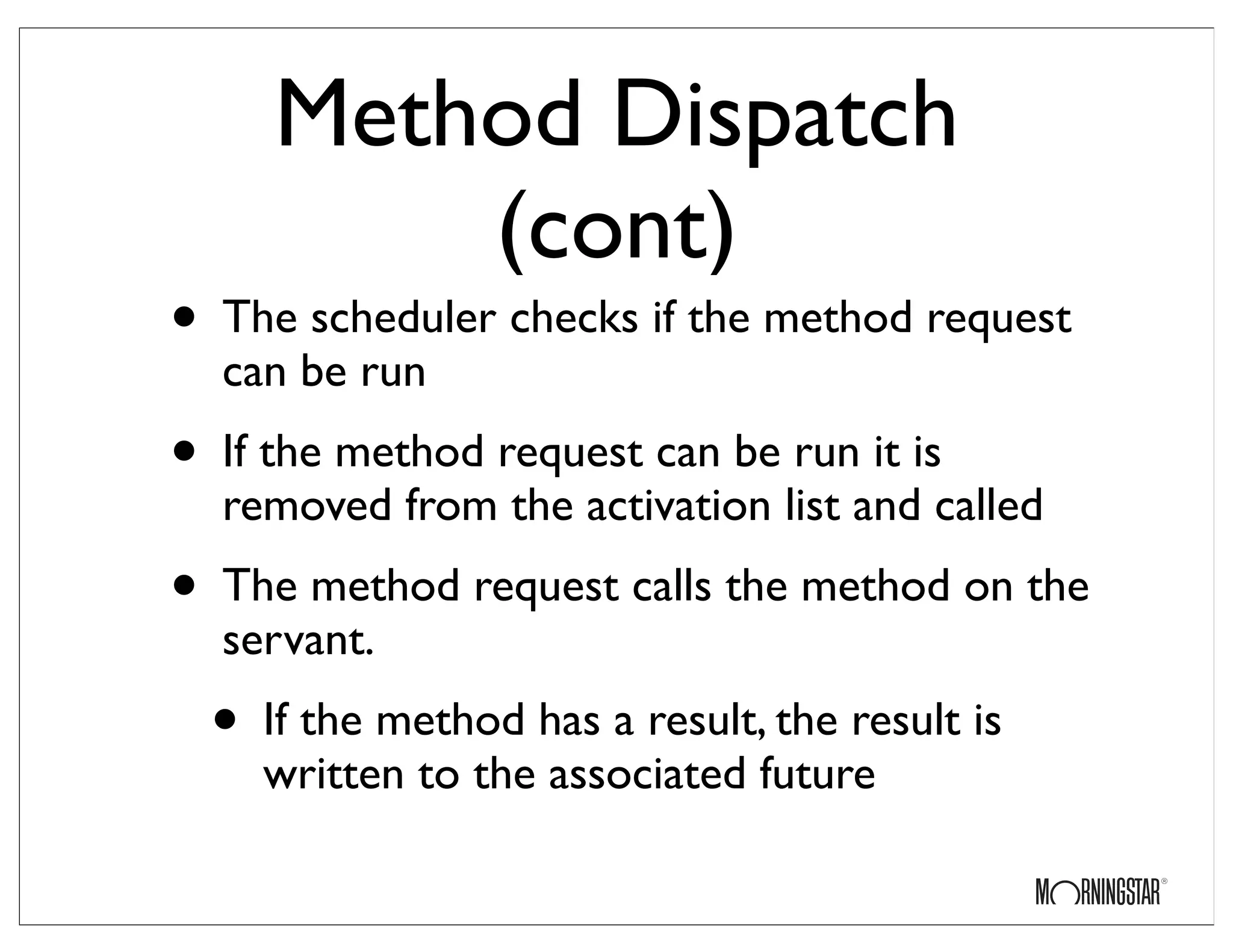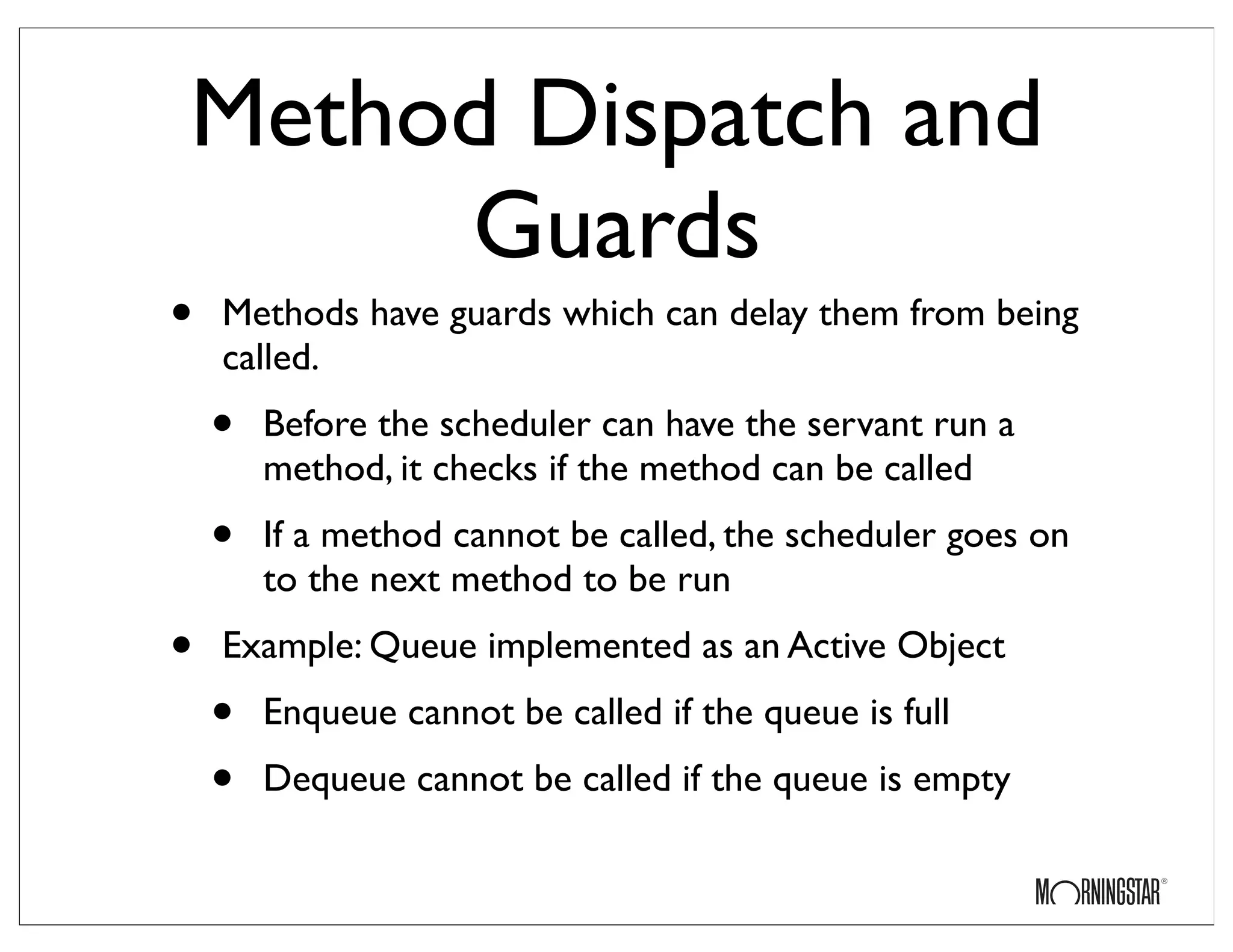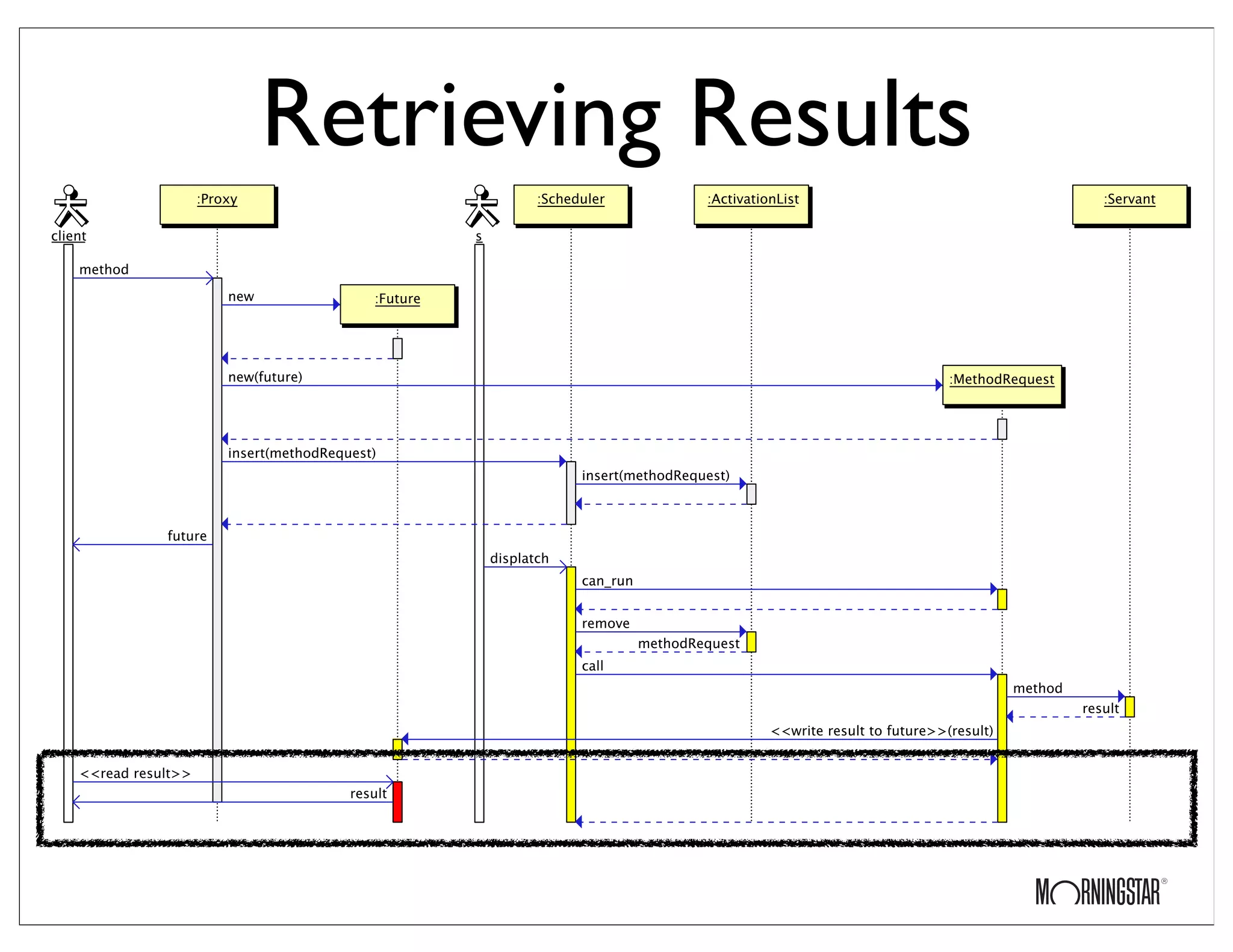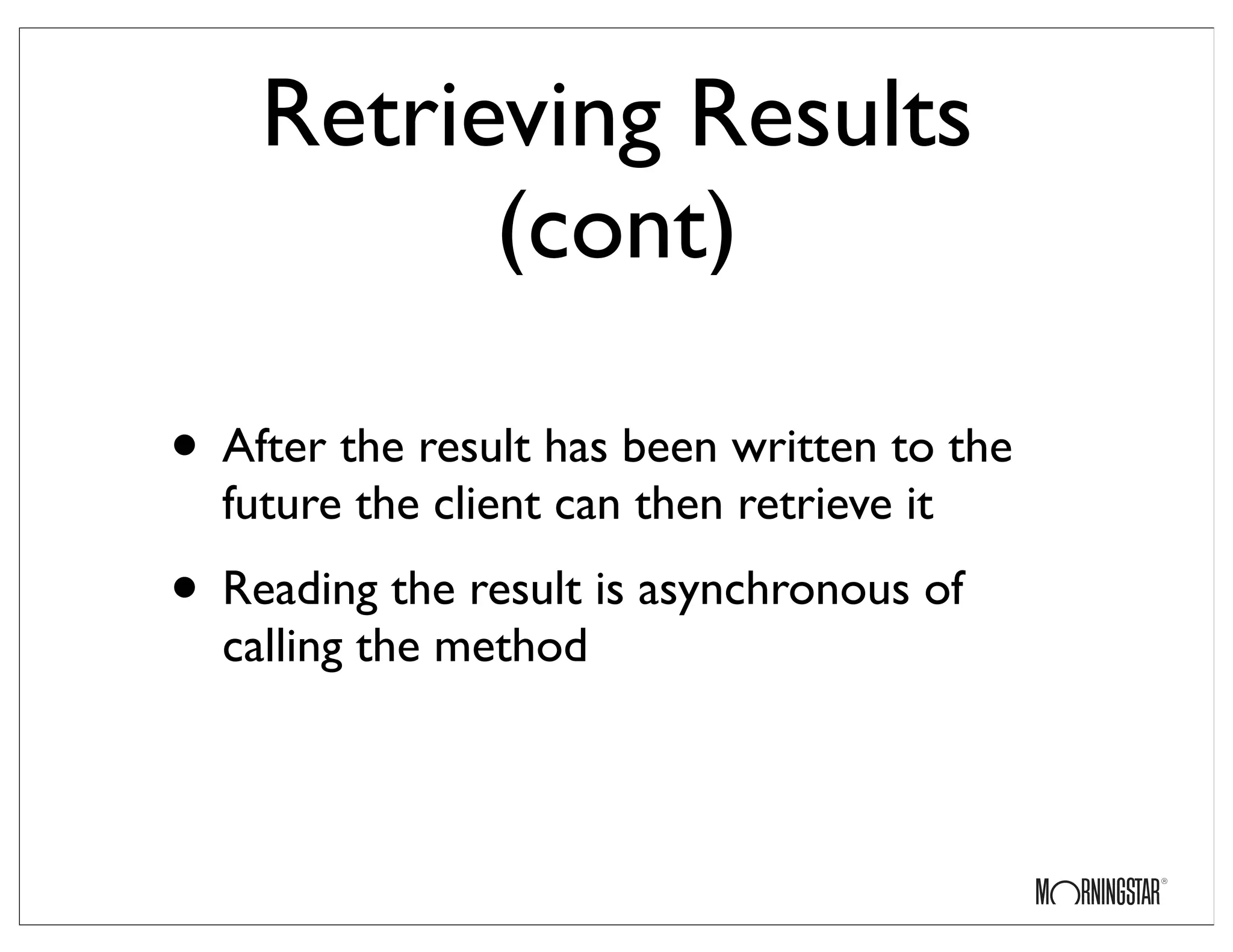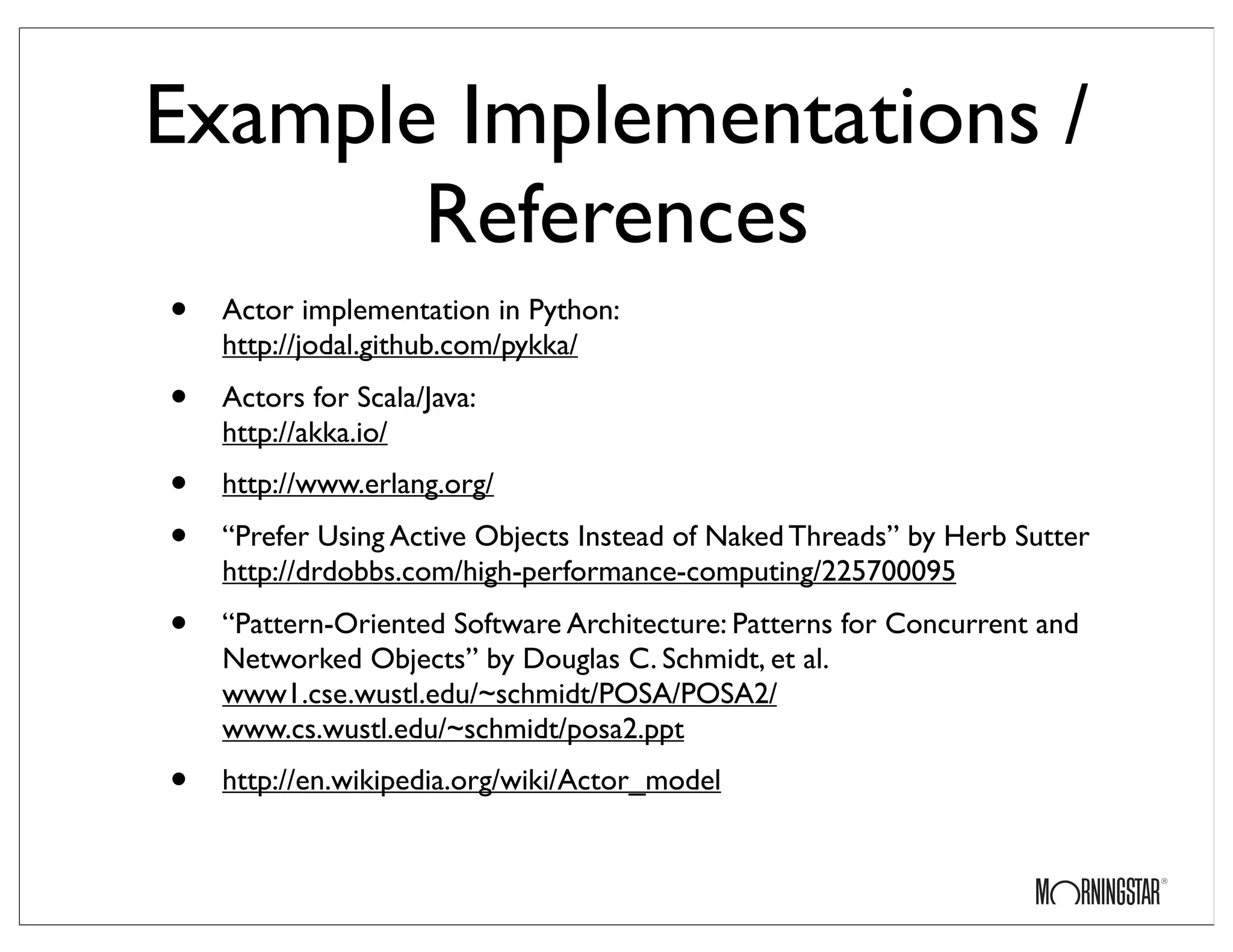The Active Object pattern decouples method execution from method invocation by allowing objects to reside in their own threads of control. A proxy handles method invocations from clients and dispatches method requests to a scheduler. The scheduler then handles executing the methods on a servant object asynchronously based on guards and an activation list. Clients can retrieve results asynchronously through futures associated with each method request. This pattern is commonly used in distributed and multi-threaded systems to simplify synchronized access to objects.

